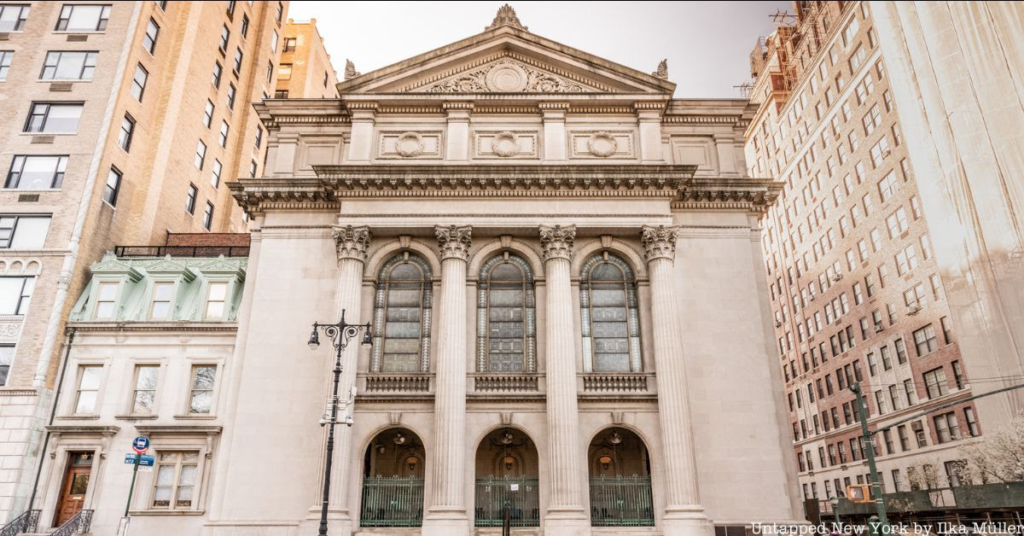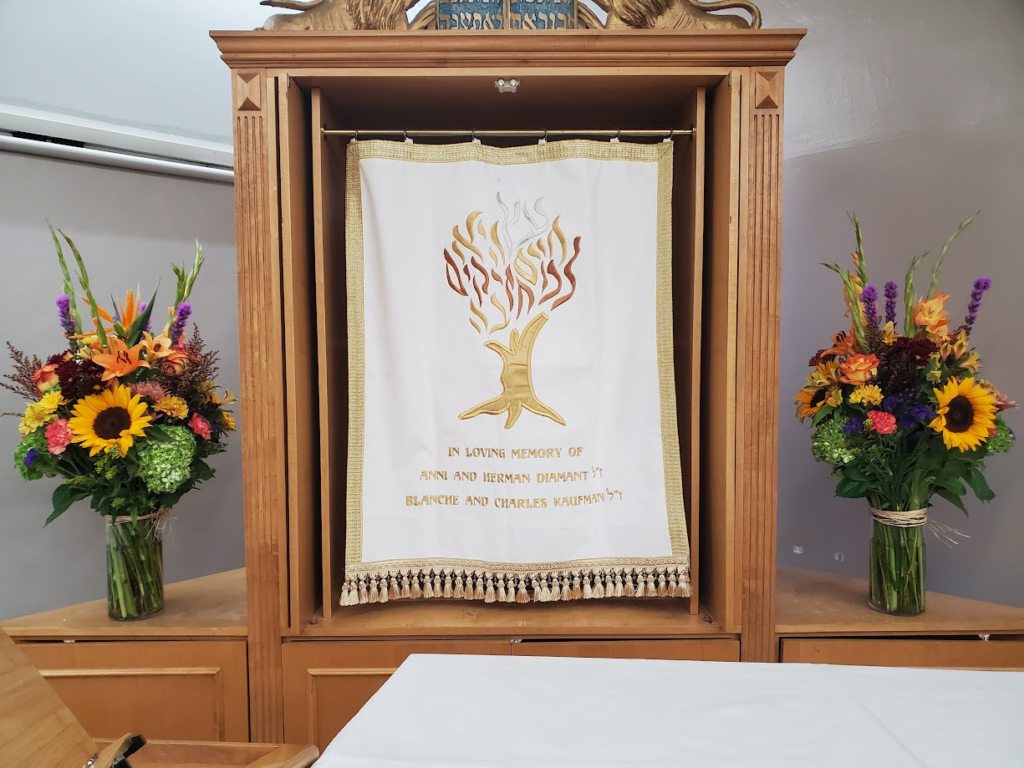Friday – Sunday, October 11-13, 2024 – THE FIRST JEWISH CONGREGATION IN NORTH AMERICA


Shearith Israel:
The Oldest Jewish Congregation
in New York
FRIDAY-SUNDAY, OCTOBER 11-13, 2024
UNTAPPED NEW YORK
ISSUE #1326

Congregation Shearith Israel, located since 1897 on West 70th Street and Central Park West, traces its origins to the arrival of persecuted Jews from Recife, Brazil, to the Dutch colony of New Amsterdam in 1654. This was arguably the first arrival and settlement of Jews as a religious community in the United States. New York’s history as a port and colonial imperial hub makes the history of New York the study of diasporas. Shearith Israel links the history of New York to Sephardi diasporas and Atlantic history

In the northeast of Brazil, Recife was home to the oldest Jewish community in the Americas, dating back to 1534. Many Portuguese Jews were forced Christian converts, known then as New Christians or conversos, after King Manuel’s 1496 edict left them with the choice of conversion or expulsion. After the colonization of Brazil, some of these conversos found refuge in Recife, where they could practice Judaism in secret. Other conversos used their commercial networks to settle in Amsterdam, becoming brokers in the transatlantic sugar trade. Later, in 1630, the Dutch conquest of Recife brought new Jewish settlers and religious toleration to the crypto-Jews. However, in 1654 the Portuguese reconquest of Recife from the Dutch brought a new wave of forced migrations. Two hundred Jewish families returned to Amsterdam, others sought refuge in the Caribbean, and a few left for New Amsterdam.
Jewish Settlement in New York
In September of 1654, twenty-three Jewish refugees from Recife arrived in New York. Upon arrival, this group of Jews from Recife was not welcomed by the colony’s director-general, Peter Stuyvesant. It became apparent that the Dutch Brazilian enclaves’ religious toleration did not apply to the New Netherlands. Unlike their North American counterparts, Sephardic Jews represented an important asset for the plantation economy for the Dutch in Brazil. Despite Stuyvesant’s objections, this group of newly arrived Jews appealed directly to the West Indian Company. In 1655 the Company granted Jews the right to stay, recognizing their loyalty and investment in the company as shareholders. Additionally, the company also granted Jews the right to trade in the Hudson and Delaware valleys.


Since the days of New Amsterdam, Jews in New York worshipped in private spaces. This changed in April 1730 with the consecration of the first synagogue. In gathering funds for the synagogue’s construction, the role of the transatlantic networks was again evident. Overseas donations, which came from places as far as London or Curaçao, made up a large part of the construction funds. Although this first synagogue was consecrated as Sephardic, throughout the eighteenth century, the majority of worshippers were already Ashkenazi.
Shearith Israel became the synagogue for all New York Jews, although events such as the American Revolution divided the community between loyalists and revolutionaries. Despite any divisions, the American context offered a unique opportunity for Sephardic and Ashkenazi Jews to interact in shared spaces, a remarkable difference from the European experience, in which both groups had their own synagogues, cemeteries, and preferred languages. However, this unity only lasted for so long. As early as 1728, Ashkenazi Jews were already the majority Jewish community in New York. By 1825, due to geographical dispersion and tensions over rituals, they separated from Shearith Israel and established their own congregation, B’nai Jeshurun.

The Jewish assimilation experience in the United States contrasted with the European one. Unlike Europe, the colonial context and the United States’ settlement by waves of immigrants offered Jews the possibility of assimilation into a land of cultural diversity. In more homogenous societies, Jews often found themselves easily singled out as outsiders, but the United States’ religious heterogeneity meant that Jews were a group among many. This particular assimilation process is evident in the adoption of neoclassicism as the preferred architectural style for Reform Jewish congregations in the United States. While in Europe, religious minorities occupied marginalized spaces, where places of worship often evoked orientalist architecture, in the United States, the ethos of assimilation seemed to promote an architecture that could blend in.

Architect of the current Shearith Israel synagogue, Arnold W. Brunner (1857-1925), was a strong proponent of classicism. Brunner theorized classicism as an architecture linking Jews both to Antiquity or the time before Jewish dispersion and western modernity. However, the preference for neoclassical architecture was not unique to Brunner. Shearith Israel’s previous synagogue on Crosby street also borrowed from Greek and Roman architecture by incorporating elements seen in the Temple of Athena Nike and the Temple of Fortuna Virilis.
In late nineteenth New York City, the adoption of neoclassical architecture also served as an attempt to differentiate Reform Jews from other groups such as immigrant Orthodox Jews at a time of public concern over immigration and poverty. Additionally, the Columbian Exposition of 1893 contributed to the popularization of classicism as the solution to urban social decay. The expositions’ main theme, the White City, reinforced the contrast between neoclassical planned urbanity with polluted, crowded, and crime-ridden cities.
Architect of the current Shearith Israel synagogue, Arnold W. Brunner (1857-1925), was a strong proponent of classicism. Brunner theorized classicism as an architecture linking Jews both to Antiquity or the time before Jewish dispersion and western modernity. However, the preference for neoclassical architecture was not unique to Brunner. Shearith Israel’s previous synagogue on Crosby street also borrowed from Greek and Roman architecture by incorporating elements seen in the Temple of Athena Nike and the Temple of Fortuna Virilis.
In late nineteenth New York City, the adoption of neoclassical architecture also served as an attempt to differentiate Reform Jews from other groups such as immigrant Orthodox Jews at a time of public concern over immigration and poverty. Additionally, the Columbian Exposition of 1893 contributed to the popularization of classicism as the solution to urban social decay. The expositions’ main theme, the White City, reinforced the contrast between neoclassical planned urbanity with polluted, crowded, and crime-ridden cities.

Another interested aspect of Shearith Israel is its cemetery, which has been moved four times! The congregation’s website places the oldest of its cemeteries at Chatham Square on what is now St. James Street. The first internment dates to 1683. In 1823, the 11th Street cemetery became the Synagogue’s next cemetery location, after a city ordinance banned burials below Canal Street. Among those buried at the 11th Street, location are Revolutionary war veteran, Ephraim Hart, and the noted painter, Joshua A. Canter. Throughout the 19th-century, parts of the cemetery were moved and the burial grounds were made smaller. In 1830, the street grid forced the cemetery to relocate to 21st Street, just west of Sixth Avenue. When New York City prohibited burial in Manhattan below 86th Street in 1851, the Synagogue’s cemetery finally moved to Queens. You can see traces of all three former locations in Manhattan to this day.
YOM KIPPUR
FRIDAY, OCTOBER 11 SUNSET
KOL NIDRE SERVICE

THE ROOSEVELT ISLAND JEWISH CONGREGATION
RIJC.ORG
TUESDAY, OCTOBER 15TH,
6:30 PM. GALLERY RIVAA
WALK THRU THE EXHIBIT WITH HISTORICAL SOCIETY’S
JUDITH BERDY AND PHOTOGRAPHER CHRIS VAIL

Chris Vail is a documentary and news photographer.
Some of the work displayed on this site is part fo a project on regional Mexican music. It started as a photo essay for the LA Times on music in the Mexican state of Veracruz. The research for that assignment opened up a rich world of traditional music where the different genres of Mexican son vary by geographic location and historical influences.
Chris currently lives on Roosevelt Island in New York City.
CREDITS
NEW YORK ALMANACK
Julio Yarce
Julio Yarce is currently a Library and Information Studies student at CUNY Queens College. In his spare time, he likes to read and write about New York’s history and its global links to European and other diasporas. He holds graduate degrees in European and Mediterranean history from the University of Miami and French Studies from New York UniversityJUDITH BERDY
All image are copyrighted (c) Roosevelt Island Historical Society unless otherwise indicated
THIS PUBLICATION FUNDED BY DISCRETIONARY FUNDS FROM CITY COUNCIL MEMBER JULIE MENIN & ROOSEVELT ISLAND OPERATING CORPORATION PUBLIC PURPOSE FUNDS.


Copyright © 2024 Roosevelt Island Historical Society, All rights reserved.Our mailing address is:
rooseveltislandhistory@gmail.com

Leave a comment